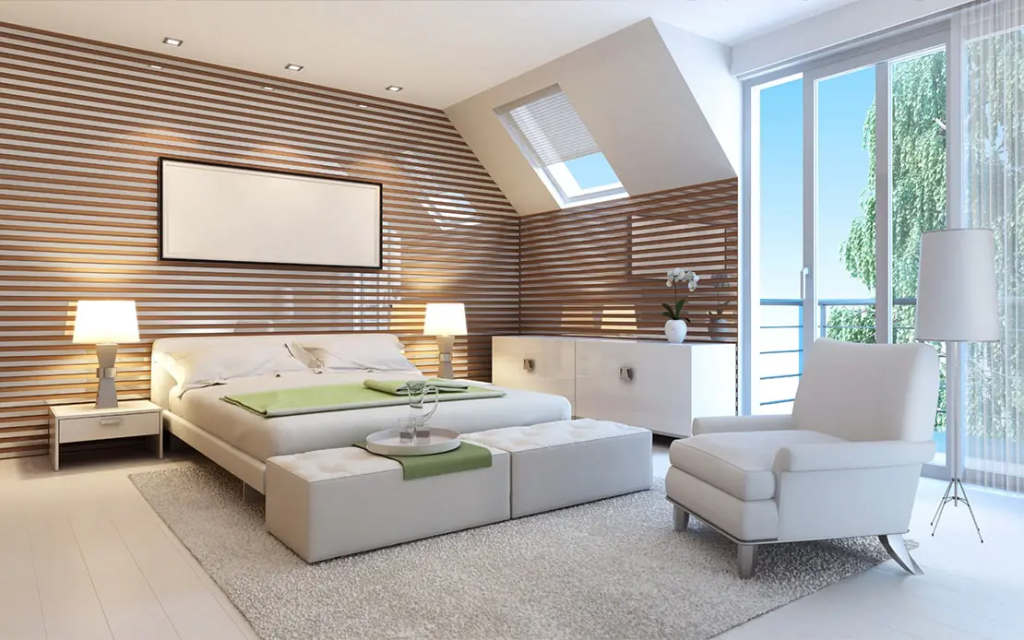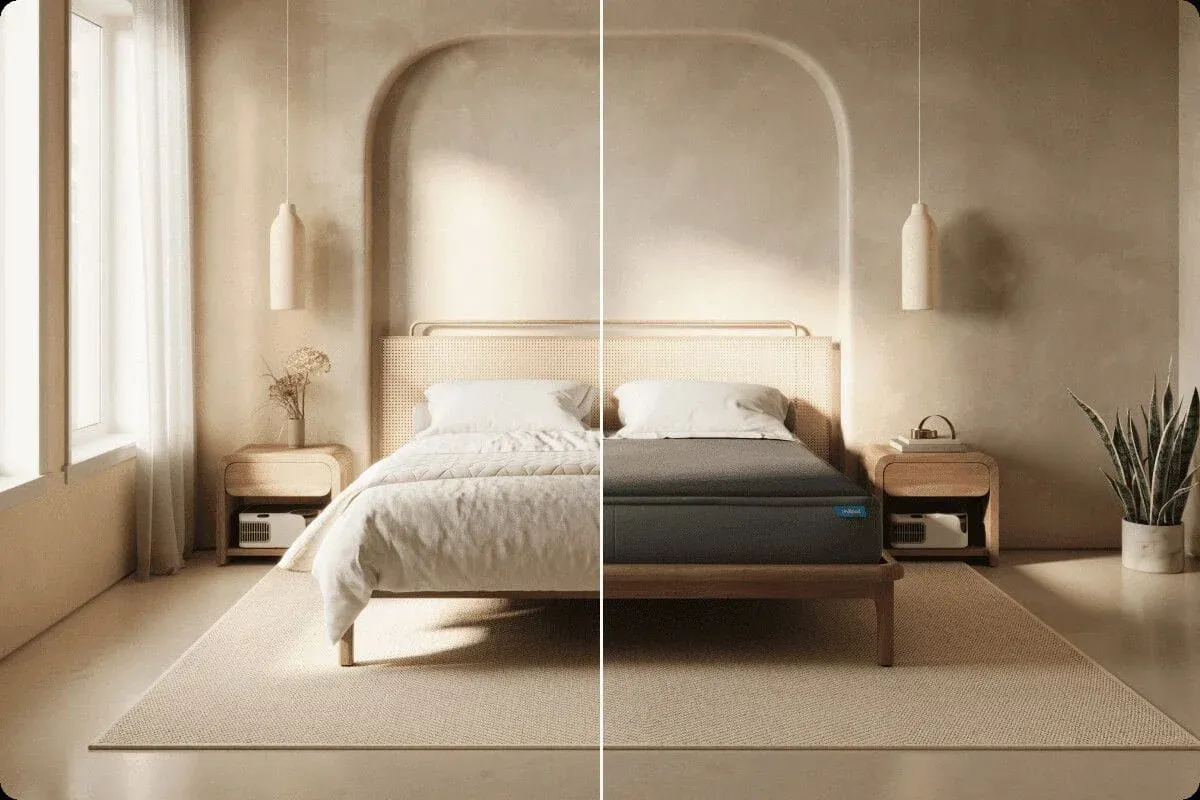Getting a good night’s sleep isn’t just about winding down or staying off your phone—your bedroom design plays a powerful role in how deeply and peacefully you rest. From the colors on your walls to the softness of your bedding, every detail shapes the environment your mind associates with calm and comfort. If you often find yourself tossing and turning or waking up still tired, it may be time to rethink your bedroom’s interior. This article walks you through practical, beautiful, and sleep-enhancing design ideas to help you turn your bedroom into a true sleep sanctuary.
Choose Sleep-Inducing Colors
The colors in your bedroom aren’t just a matter of style—they send signals to your brain that can either activate alertness or invite relaxation. Soft blues are often considered the most sleep-friendly, calming the nervous system and promoting steady breathing. Shades of sage green, muted lavender, and warm neutral tones such as taupe and sand also work wonders for calming the mind.
On the other hand, intense hues like bright red, orange, or stark white can overstimulate the senses, making it harder to unwind. Even if you love a bold aesthetic, it’s worth balancing these tones with soothing accents or using them sparingly, like in artwork or small decorative items.
Invest in the Right Lighting

Lighting has a direct effect on your circadian rhythm—the body’s internal clock that tells you when it’s time to sleep. Harsh ceiling lights or overly cool-toned bulbs can trick your brain into thinking it’s still daylight. That’s why warm lighting, similar to the golden tones of sunset, is ideal for evening use.
A layered lighting approach works best. Overhead lighting for general use, bedside lamps for reading, and soft accent lights help create flexibility and ambiance. Consider installing dimmer switches so you can gradually decrease light levels as bedtime approaches. This simple change can make your transition to sleep feel more natural and peaceful.
Minimize Clutter and Promote Calm
Visual clutter can be surprisingly disruptive to your rest. A room filled with scattered clothes, excess furniture, or mismatched decor creates a sense of mental disorganization. When your eyes and brain are constantly scanning a busy environment, they remain more alert—even in your most private space.
A serene atmosphere begins with simplicity. Use smart storage to maintain order without sacrificing aesthetics. A few decorative touches—like a textured throw, a piece of meaningful artwork, or a bedside plant—can offer warmth and personality without overwhelming the room.
Prioritize Your Mattress and Bedding
Your bed is the heart of your sleep space, and its comfort level can make or break your rest. If your mattress is more than 8–10 years old or feels uneven, it may no longer provide the support your body needs. While firmness is subjective, many people benefit from medium-firm options that balance comfort with spinal alignment.
Equally important are your sheets and comforter. Natural fabrics like cotton, bamboo, and linen allow for better airflow and temperature regulation, helping you stay cool and comfortable throughout the night. The texture and breathability of your bedding can quietly influence how deeply you sleep, so it’s worth choosing materials you truly love to touch and lie in.
Block Out Noise and Light
Light pollution and unexpected sounds can severely impact sleep quality, especially in urban environments. If your bedroom faces a busy street or you’re sensitive to early morning light, even small adjustments can offer big improvements.
Consider blackout curtains to keep your room as dark as possible. They not only block external light but can also help dampen noise. Adding a rug or two can further reduce echo and absorb sound. For those particularly sensitive to auditory disruptions, a white noise machine or soft fan can offer consistent, calming background noise that drowns out disturbances.
Introduce Calming Scents and Natural Elements
Your bedroom should engage all the senses—not just sight and touch. Scents like lavender, eucalyptus, and chamomile are well-known for their ability to promote relaxation. A simple essential oil diffuser or pillow mist can become part of your evening wind-down ritual.
Natural elements also bring balance and grounding. Wooden finishes, rattan furniture, or indoor plants can help connect you to nature, subtly reducing stress and promoting emotional well-being. Even a single leafy plant by the window can transform the energy of a room and add to the air quality.
Keep Technology Out of the Bedroom

It’s tempting to scroll through your phone or fall asleep with the TV playing, but the blue light emitted from screens disrupts melatonin production and delays sleep onset. Beyond the biological effects, screens tend to keep your brain mentally active—exactly the opposite of what you want before bed.
Design your bedroom to encourage analog relaxation. Try leaving your phone in another room and replacing it with an actual alarm clock. If you love unwinding with entertainment, consider shifting that activity to a separate living area. A bedroom free from digital distractions is one that tells your body: it’s time to rest.
Personalize Your Sleep Space
While neutral design principles work universally, your sleep sanctuary should still reflect your identity. Personal touches—like family photos, your favorite books, or meaningful artwork—can create an emotional sense of safety and comfort. It’s not about decorating with more, but rather choosing items that nurture and calm you.
If you enjoy specific nighttime rituals, design around them. Maybe you love reading before bed—then a cozy chair and soft lamp are essential. Or perhaps meditation is part of your routine; in that case, a small floor cushion and corner space can become your personal haven for mindfulness.
Sleep isn’t just about your routine—it’s about your environment. Small, intentional changes to your bedroom design can profoundly influence your ability to fall asleep, stay asleep, and wake up refreshed. Whether it’s swapping your lightbulbs for warmer tones, decluttering your space, or choosing sleep-enhancing colors, each step brings you closer to a healthier, more restful night. You don’t need to overhaul your entire room overnight—just begin with one change that feels most natural, and build from there.

